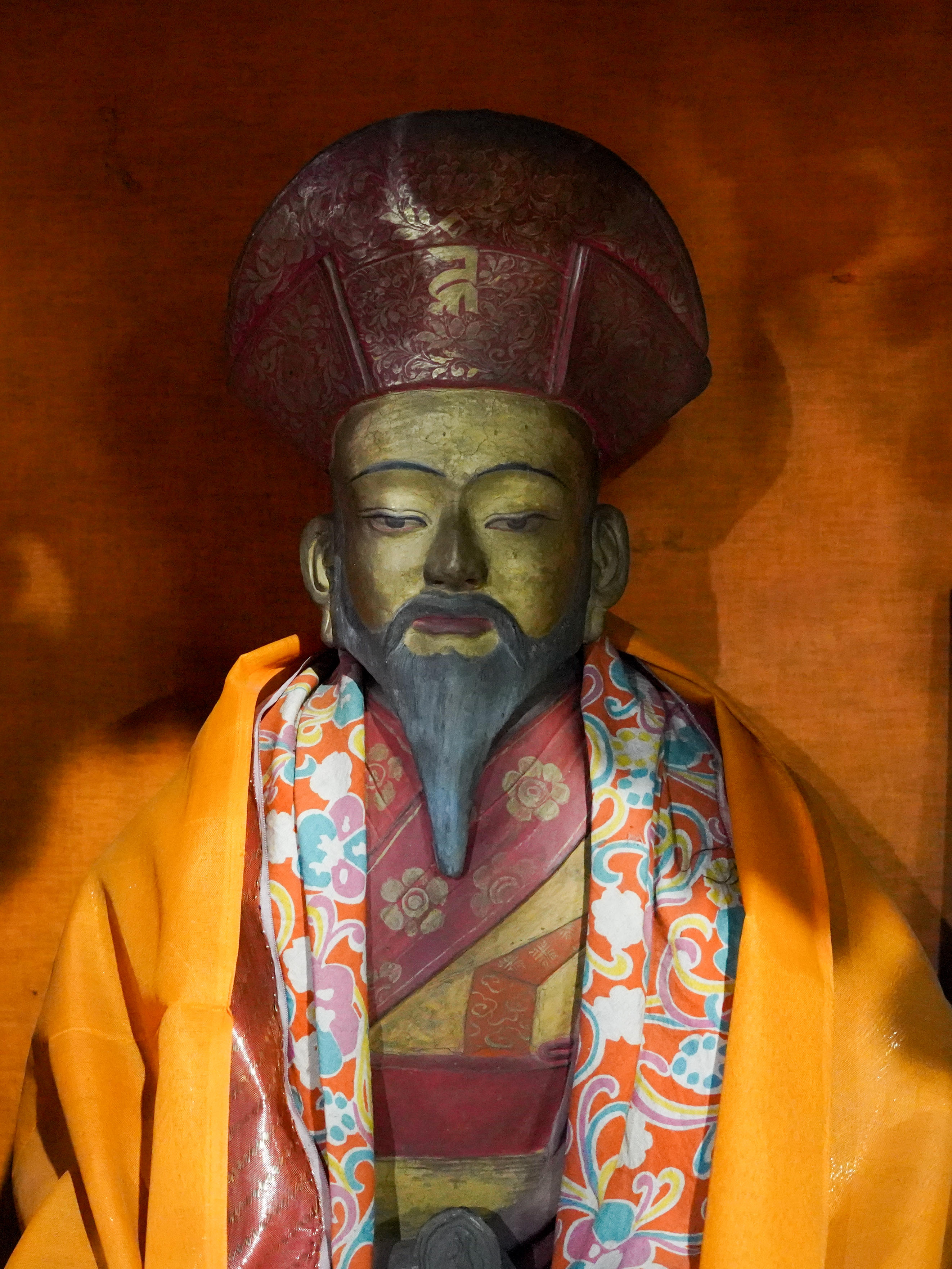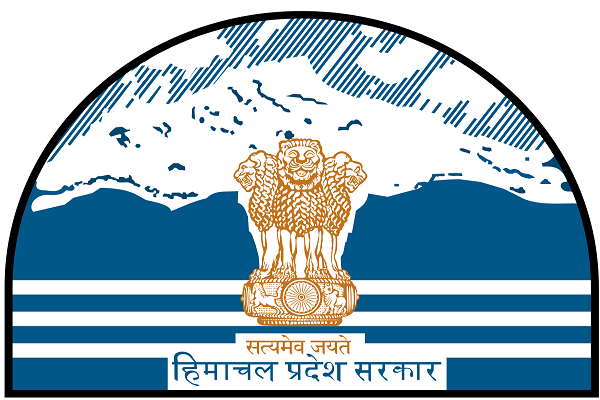|
Gemur Monastery
Gemur Monastery is a Buddhist gompa, above the village of Gemur, Lahaul and Spiti district, Himachal Pradesh, northern India. The monastery dates from the first half of the 17th century. Geography The Gemur Gompa, elevation , is about on foot from Gemur village. Gemur village is located on NH-505 upstream from Keylong in the Bhaga River valley, Lahaul. A rural road off NH-505 between Keylong and Gemur, terminates at the Gompa. This route covers a distance of from Keylong. History The Gemur Gompa (monastery) is regarded as a central seat of Tibetan Buddhism in the sTod valley of Lahaul. In religious literature it is also known as ''Dge-smon Gsam-bstan chos-gling''. It is said to be founded by sTagtshang Raspa in the first half of the 17th century. As per the legends and folklore Lama Tanzin Paldan of Gemur village was responsible for its construction with the aid of the Thakurs of Khangsar. Scholars have argued that the Gemur gompa was located at a higher altitude ... [...More Info...] [...Related Items...] OR: [Wikipedia] [Google] [Baidu] |
Lahaul And Spiti District
The Lahaul and Spiti district in the Indian state of Himachal Pradesh consists of the two formerly separate districts of Lahaul () and Spiti (; or ). The present administrative centre is Kyelang in Lahaul. Before the two districts were merged, Kardang was the capital of Lahaul, and Dhankar the capital of Spiti. The district was formed in 1960, and is the fourth least populous district in India (out of 640). It is the least densely populated district of India, according to the Census of India 2011. Geography Geologically located on the Tibetan Plateau, Lahaul and Spiti district is connected to Manali through the Rohtang Pass. ''Kunzum la'' or the Kunzum Pass (altitude ) is the entrance pass to the Spiti Valley from Lahaul. It is from Chandra Tal. To the south, Spiti ends from Tabo, at the Sumdo where the road enters Kinnaur and joins National Highway 5. Spiti is barren and difficult to cross, with an average elevation of the valley floor of . It is surrounded by lofty ran ... [...More Info...] [...Related Items...] OR: [Wikipedia] [Google] [Baidu] |
Thanka
A ''thangka'', variously spelled as ''thangka'', ''tangka'', ''thanka'', or ''tanka'' (; Standard Tibetan, Tibetan: ཐང་ཀ་; Nepal Bhasa: पौभा), is a Tibetan Buddhism, Tibetan Buddhist painting on cotton, silk appliqué, usually depicting a Buddhist deity, scene, or mandala. Thangkas are traditionally kept unframed and rolled up when not on display, mounted on a textile backing somewhat in the style of Chinese scroll paintings, with a further silk cover on the front. So treated, thangkas can last a long time, but because of their delicate nature, they have to be kept in dry places where moisture will not affect the quality of the silk. Most thangkas are relatively small, comparable in size to a Western half-length portrait, but some are extremely large, several metres in each dimension; these were designed to be displayed, typically for very brief periods on a monastery wall, as part of religious festivals. Most thangkas were intended for personal meditation or i ... [...More Info...] [...Related Items...] OR: [Wikipedia] [Google] [Baidu] |
Buddhist Monasteries In Himachal Pradesh
Buddhism ( , ), also known as Buddha Dharma and Dharmavinaya (), is an Indian religion or philosophical tradition based on teachings attributed to the Buddha. It originated in northern India as a -movement in the 5th century BCE, and gradually spread throughout much of Asia via the Silk Road. It is the world's fourth-largest religion, with over 520 million followers (Buddhists) who comprise seven percent of the global population. The Buddha taught the Middle Way, a path of spiritual development that avoids both extreme asceticism and hedonism. It aims at liberation from clinging and craving to things which are impermanent (), incapable of satisfying ('), and without a lasting essence (), ending the cycle of death and rebirth (). A summary of this path is expressed in the Noble Eightfold Path, a training of the mind with observance of Buddhist ethics and meditation. Other widely observed practices include: monasticism; "taking refuge" in the Buddha, the , and the ; and ... [...More Info...] [...Related Items...] OR: [Wikipedia] [Google] [Baidu] |
Government Of Himachal Pradesh
The Government of Himachal Pradesh also known as the State Government of Himachal Pradesh, or locally as State Government, is the supreme governing authority of the Indian state of Himachal Pradesh. It consists of an executive branch, led by the Governor of Himachal Pradesh, a judiciary and a legislative branch. Like other states in India, the head of state of Himachal Pradesh is the Governor, appointed by the President of India on the advice of the Central government. His or her post is largely ceremonial. The Chief Minister is the head of government and council of ministers.There exists parliamentary system of government in state with council of ministers responsible to legislative assembly. Shimla is the capital of Himachal Pradesh, and houses the Vidhan Sabha (Legislative Assembly) and the secretariat (Ellersile). Dharamshala is the winter capital of the state. The Himachal Pradesh High Court is located in Shimla, which has jurisdiction over the whole of Himachal Pradesh. St ... [...More Info...] [...Related Items...] OR: [Wikipedia] [Google] [Baidu] |
Marichi Vajravarahi Gemur Gompa Lahaul Oct20 R16 04272
Marichi ( sa, मरीचि, Marīci, lit=ray of light) or Mareechi or Marishi is the mind-born son of Brahma, and one of the Saptarishi in Hindu mythology. He is also the father of Kashyapa, and the grandfather of the ''devas'' and the ''asuras''. In Jainism, he is referred to as one of the previous reincarnations of the 24th ''Tirthankara,'' Mahavira. Saptarishi Saptarishi, a Sanskrit dvigu meaning "seven sages" are the seven rishis who are extolled at many places in the Vedas and Hindu literature. The Vedic Samhitas never enumerate these rishis by name, though later Vedic texts such as the Brahmanas and Upanishads do so. While earlier texts do not mention Marichi as one of the seven, references can be found in the epic ''Mahabharata''. In some parts of India, people believe these are seven stars of the Big Dipper named "Vashista", "Marichi", " Pulastya", " Pulaha", " Atri", "Angiras" and "Kratu". There is another star slightly visible within it, known as " Arundhati". ... [...More Info...] [...Related Items...] OR: [Wikipedia] [Google] [Baidu] |
Prayer Hall Gemur Gompa Lahaul Oct20 R16 04265
Prayer is an invocation or act that seeks to activate a rapport with an object of worship through deliberate communication. In the narrow sense, the term refers to an act of supplication or intercession directed towards a deity or a deified ancestor. More generally, prayer can also have the purpose of thanksgiving or praise, and in comparative religion is closely associated with more abstract forms of meditation and with charms or spells. Prayer can take a variety of forms: it can be part of a set liturgy or ritual, and it can be performed alone or in groups. Prayer may take the form of a hymn, incantation, formal creedal statement, or a spontaneous utterance in the praying person. The act of prayer is attested in written sources as early as 5000 years ago. Today, most major religions involve prayer in one way or another; some ritualize the act, requiring a strict sequence of actions or placing a restriction on who is permitted to pray, while others teach that prayer may b ... [...More Info...] [...Related Items...] OR: [Wikipedia] [Google] [Baidu] |
Mouton De Gruyter
Walter de Gruyter GmbH, known as De Gruyter (), is a German scholarly publishing house specializing in academic literature. History The roots of the company go back to 1749 when Frederick the Great granted the Königliche Realschule in Berlin the royal privilege to open a bookstore and "to publish good and useful books". In 1800, the store was taken over by Georg Reimer (1776–1842), operating as the ''Reimer'sche Buchhandlung'' from 1817, while the school’s press eventually became the ''Georg Reimer Verlag''. From 1816, Reimer used the representative Sacken'sche Palace on Berlin's Wilhelmstraße for his family and the publishing house, whereby the wings contained his print shop and press. The building became a meeting point for Berlin salon life and later served as the official residence of the president of Germany. Born in Ruhrort in 1862, Walter de Gruyter took a position with Reimer Verlag in 1894. By 1897, at the age of 35, he had become sole proprietor of the h ... [...More Info...] [...Related Items...] OR: [Wikipedia] [Google] [Baidu] |
Tshechu
A tshechu ( dz, ཚེས་བཅུ།, literally "day ten") is any of the annual religious Bhutanese festivals held in each district or dzongkhag of Bhutan on the tenth day of a month of the lunar calendar, lunar Tibetan calendar. The month depends on the place. Tshechus are religious festivals of the Drukpa Lineage of the Kagyu school of Tibetan Buddhism. Tshechus are large social gatherings, which perform the function of social bonding among people of remote and spread-out villages. Large markets also congregate at the fair locations, leading to brisk commerce.Dancing on the demon's back: the dramnyen dance and song of Bhutan by Elaine Dobson, John Blacking Symposium: Music Culture and Society, Callaway Centre, University of Western Aust ... [...More Info...] [...Related Items...] OR: [Wikipedia] [Google] [Baidu] |
Drukpa Kagyu
The Drukpa Kagyu (), or simply Drukpa, sometimes called either Dugpa or "Red Hat sect" in older sources,Initiations And Initiates In Tibet, p. 34 by Alexandra David-Néel. lineage is a branch of the Kagyu school of . The Kagyu school is one of the Sarma or "New Translation" sc ... [...More Info...] [...Related Items...] OR: [Wikipedia] [Google] [Baidu] |
Himachal Pradesh
Himachal Pradesh (; ; "Snow-laden Mountain Province") is a state in the northern part of India. Situated in the Western Himalayas, it is one of the thirteen mountain states and is characterized by an extreme landscape featuring several peaks and extensive river systems. Himachal Pradesh is the northernmost state of India and shares borders with the union territories of Jammu and Kashmir and Ladakh to the north, and the states of Punjab to the west, Haryana to the southwest, Uttarakhand to the southeast and a very narrow border with Uttar Pradesh to the south. The state also shares an international border to the east with the Tibet Autonomous Region in China. Himachal Pradesh is also known as , meaning 'Land of Gods' and which means 'Land of the Brave'. The predominantly mountainous region comprising the present-day Himachal Pradesh has been inhabited since pre-historic times, having witnessed multiple waves of human migrations from other areas. Through its history, the ... [...More Info...] [...Related Items...] OR: [Wikipedia] [Google] [Baidu] |
Lama Tansin Paldan Gemur Gompa Lahaul Oct22 A7C 03507
Lama (; "chief") is a title for a teacher of the Dharma in Tibetan Buddhism. The name is similar to the Sanskrit term ''guru'', meaning "heavy one", endowed with qualities the student will eventually embody. The Tibetan word "lama" means "highest principle", and less literally "highest mother" or "highest parent" to show close relationship between teacher and student."lama" from Historically, the term was used for venerated spiritual masters or heads of monasteries. Today the title can be used as an [...More Info...] [...Related Items...] OR: [Wikipedia] [Google] [Baidu] |







